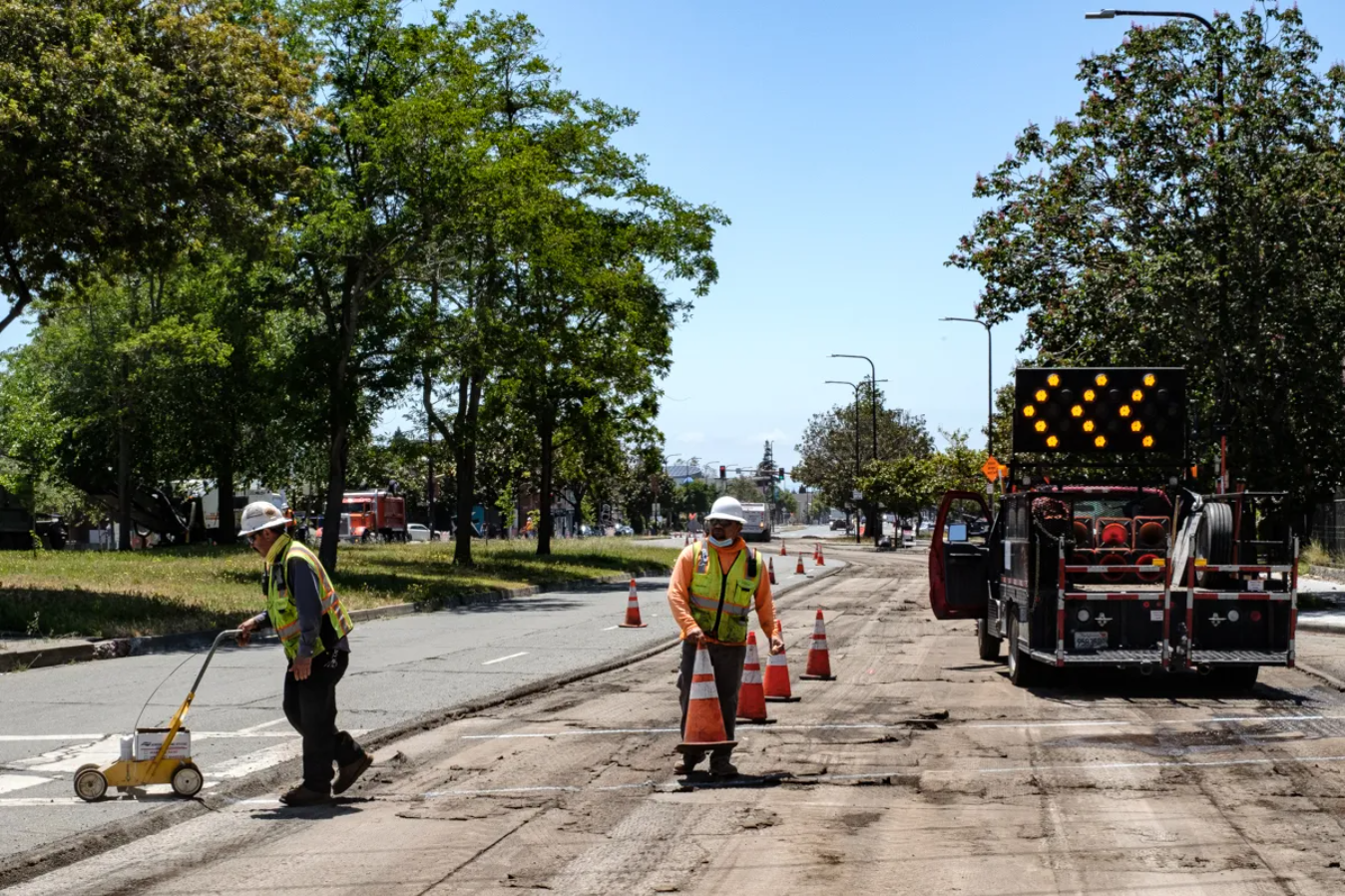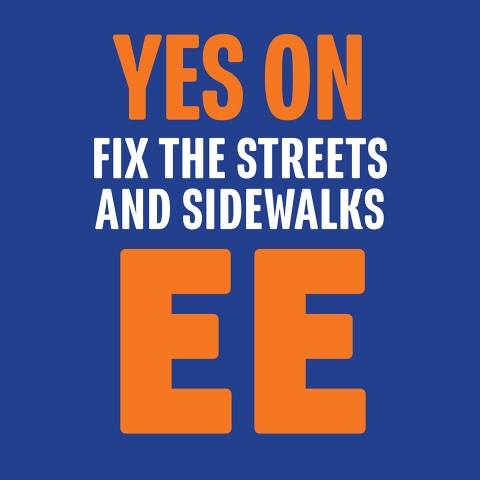
In another instance of dueling ballot measures, two different proposals for streets and sidewalk funding, both of which began with petitions, will be on November’s ballot.
For years, top public works officials have warned the City Council that existing funding levels are not only insufficient to repair city streets but are not even high enough to keep streets from getting worse than they already are. The council had hoped 2022’s Measure L would help raise new funds, but the $650 million bond measure, which would have funded a broad spectrum of city work and services, fell short of the 2/3 majority it would have needed to pass.
Measure EE, which organizers named the “Fix Streets and Sidewalks Initiative Tax,” would impose a parcel tax of 13 cents per square foot on all property to fund repairs on street surfaces, sidewalks and paths, beginning in 2025.
“The city estimates the tax would raise roughly $10.8 million in the first year, and $153 million over its 12-year duration, adjusted for inflation,” according to an analysis by the City Attorney’s Office.
Measure EE would prevent using tax revenue to repair streets over a certain quality threshold, and “are primarily intended to repair existing infrastructure and not to develop new infrastructure,” according to the analysis. It would also establish an oversight commission, modeled on the Independent Redistricting Commission, to monitor the flow of funds and require a triennial audit by the City Auditor and yearly paving funds reports from Public Works.
Funding for EE would break down as follows:
Proceeds from the tax would be placed into a special fund and allocated as follows:
- At least 36% for street repair, repaving, and reconstruction, with priority on worst streets, and emphasis on bikeways and streets in historically under-served neighborhoods
- 35% for sidewalk and pathway work
- Up to 13.5% for the highest priority pedestrian safety projects;
- Up to 7% for traffic-calming measures on bike boulevards
- Up to 7% for “green infrastructure and environmental enhancements”
“Measure EE focuses on the basics to ensure that we will get our streets, sidewalks and paths repaired so that everyone can walk, bike and drive safely,” according to the ballot argument in favor of it from five transit activists, two of whom previously sat on city commissions.
But some say Measure EE does not go far enough, and would just be throwing good money after bad.
Measure FF — dubbed the “Sustainable and Accountable Funding for Equitable Street Transformation, Revitalization, Enhancements and Essential Traffic Study,” or SAFE STREETS, initiative — would establish a new 14-year parcel tax of 17 cents per square foot on residential property and a quarter per square foot of commercial property. It would fund street paving as well, but would also include funding for new safety infrastructure such as traffic-calming devices and street redesigns.
The proposal is projected to raise roughly $15 million each year for 14 years for a total of roughly $267 million over its lifetime after adjustments for inflation, according to the City Attorney’s Office’s analysis.
Measure FF would break down that funding pool as follows:
- 45% for streets
- 15% for sidewalks and pedestrian paths, until the backlog of damage to them is dealt with
- 30% for safety improvements, including traffic-calming devices and street redesigns
- 10% for environmental enhancements, fees, auditing costs and other services
This measure would also require an oversight committee. The city manager would have to report yearly on progress funded by the measure. The city auditor would review the funding stream every three years, as with Measure EE.
Measure FF, which has backing from city firefighters and the Sierra Club, would not only reverse years of underinvestment in city streets, but make the city safer in the modern age of larger cars and smartphones, making students’ routes to and from school safer and firefighters’ and medics’ trips to emergencies faster, according to its advocates.
“Measure FF requires the city to implement critical safety features like raised crosswalks and safety flashing beacons,” according to the ballot argument in favor of it from Mayor Jesse Arreguín, City Auditor Jenny Wong, BUSD Board of Directors President Ana Vasudeo, former Councilmember Laurie Capitelli and former BUSD Director Julie Sinai.
As with the competing rent ordinance ballot questions, no more than one of these pairs — Measure EE or Measure FF — can ultimately be put into practice. Each measure requires a simple majority to pass. If both measures succeed, the one with the higher vote count will prevail.

